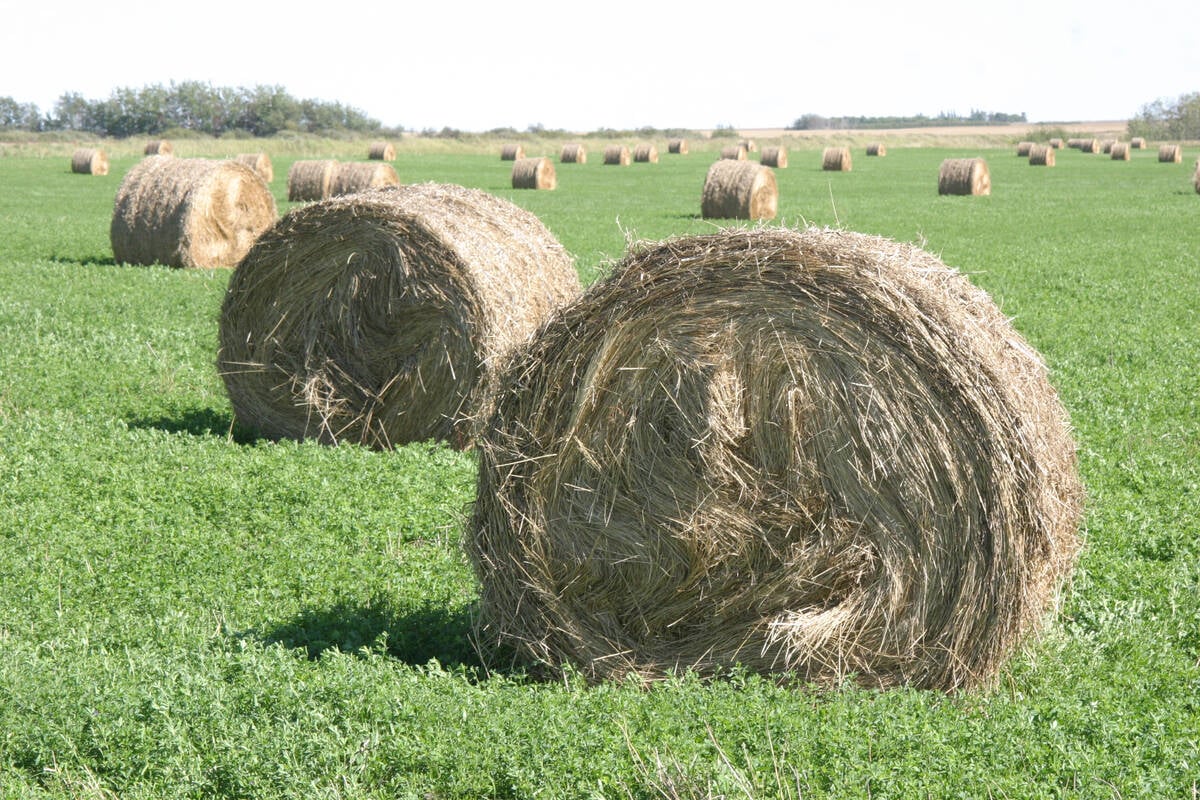Recent studies have demonstrated that liver abscesses are still a common occurrence among cattle at slaughter.
Liver abscesses are associated with episodes of rumen acidosis caused by carbohydrate overload. It is most commonly observed in feedlot cattle and in dairy cattle that are fed high level grain diets.
Risk factors include the amount of carbohydrate ingested, the type of grain being fed and the degree to which the grain has been processed.
The adaptation of the rumen bacteria to a carbohydrate-based diet is also an important factor in determining the severity of the acidosis.
Read Also

Breaking down successful winter feeding into six steps
It’s that time of year when it is important to start planning for a cow herd’s winter feeding program. Here are six steps I think are necessary to consider when getting your feed tested.
Eating excessive levels of carbohydrates such as grain can change the rumen bacteria and drop the pH of the rumen. The lowered pH can damage the rumen wall and allows bacteria to pass into the bloodstream and enter the liver, where they can cause abscesses to form.
The National Beef Quality Audit carried out by the Beef Cattle Research Council in 2010-11 used the Elanco scoring system to assess livers for abscessation:
- 0: no abscesses.
- A-: One or two abscesses or abscess scars.
- A: Two to four abscesses that are generally less than an inch in diametre.
- A+: One or more large active abscesses along with associated inflammation of the liver.
A+ liver scores have been associated with reduced performance in feedlot cattle.
The 2010-11 audit found that 9.9 percent of livers from fed cattle had A+ liver scores, compared to two percent in 1999.
As well, 69 percent of the livers were deemed suitable for human consumption in 2010-11, down from 76 percent in 1999.
The audit estimated that liver abscesses cost the cattle industry a loss of almost $30 million a year.
A recent survey in the U.S. Great Lakes region, which was published in the Journal of Dairy Science, evaluated 1,461 cull cows at slaughter, of which 87 percent were classified as dairy cows. The study observed liver abscesses in 32 percent of the population and found that 18.5 percent of the abscessed livers would equate to an A+ score.
The U.S. National Beef Quality Audit of 2011 found condemned livers in almost 21 percent of slaughter cattle.
Studies that have examined ruminal health at slaughter in fed beef cattle have found that 10.5 percent of fed cattle at slaughter had severe ruminal scars caused by episodes of ruminal acidosis.
These audits have shown that liver abscesses are still a significant economic and welfare challenge for the beef industry to overcome. There is a significant opportunity to look for specific interventions, such as improved nutritional management, vaccines or pharmaceutical approaches to reduce the occurrence of rumen acidosis and liver abscessation.
A recent study by Dr. Castillo-Lopez and Dr. Greg Penner at the University of Saskatchewan used specialized in-dwelling pH measurement systems in the rumen to measure the pH of the rumen on an ongoing basis throughout the backgrounding and finishing period of feedlot cattle.
These measurement systems allowed researchers to record the number and duration of episodes when the pH dropped below a critical level of 5.5, which represents rumen acidosis.
The study found that most of episodes of ruminal acidosis happened during the finishing phase of the feeding period, particularly toward the end of the finishing period. Few episodes of acidosis were found during the study’s backgrounding and transition phases.
The study also found that 10.7 percent of the steers in this study had liver scores that would be considered A+, which is similar to the 9.9 percent level reported in the 2010-11 BCRC audit.
The study also demonstrated that the number and duration of episodes of ruminal acidosis negatively affected average daily gain and feed efficiency.
Liver abscesses represent a significant economic loss at the slaughter plant because of the economic value of the liver.
They also indicate rumen health during the feeding period, and the increases we have seen in recent audits suggest that this may continue to be both a significant economic and animal welfare challenge that the dairy and beef industries need to addressed.
This type of research may give us more insights into the nutritional, animal and environmental factors that contribute to rumen health.














